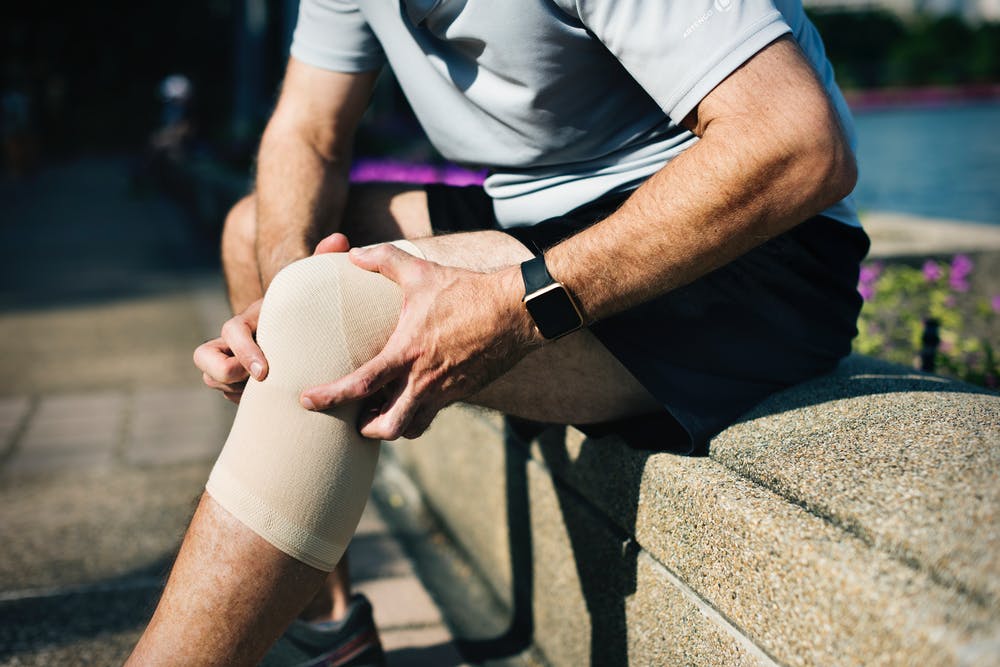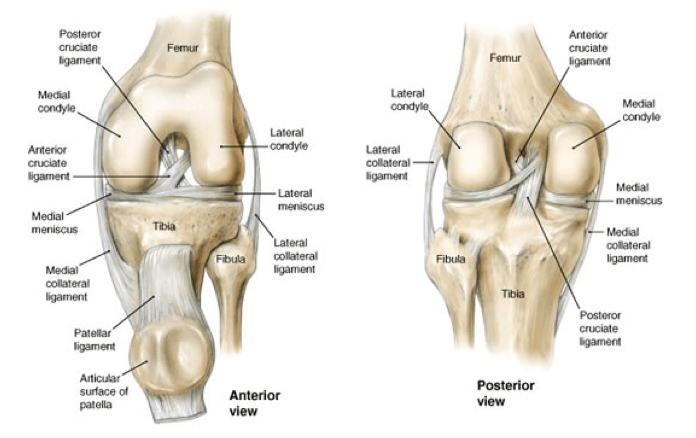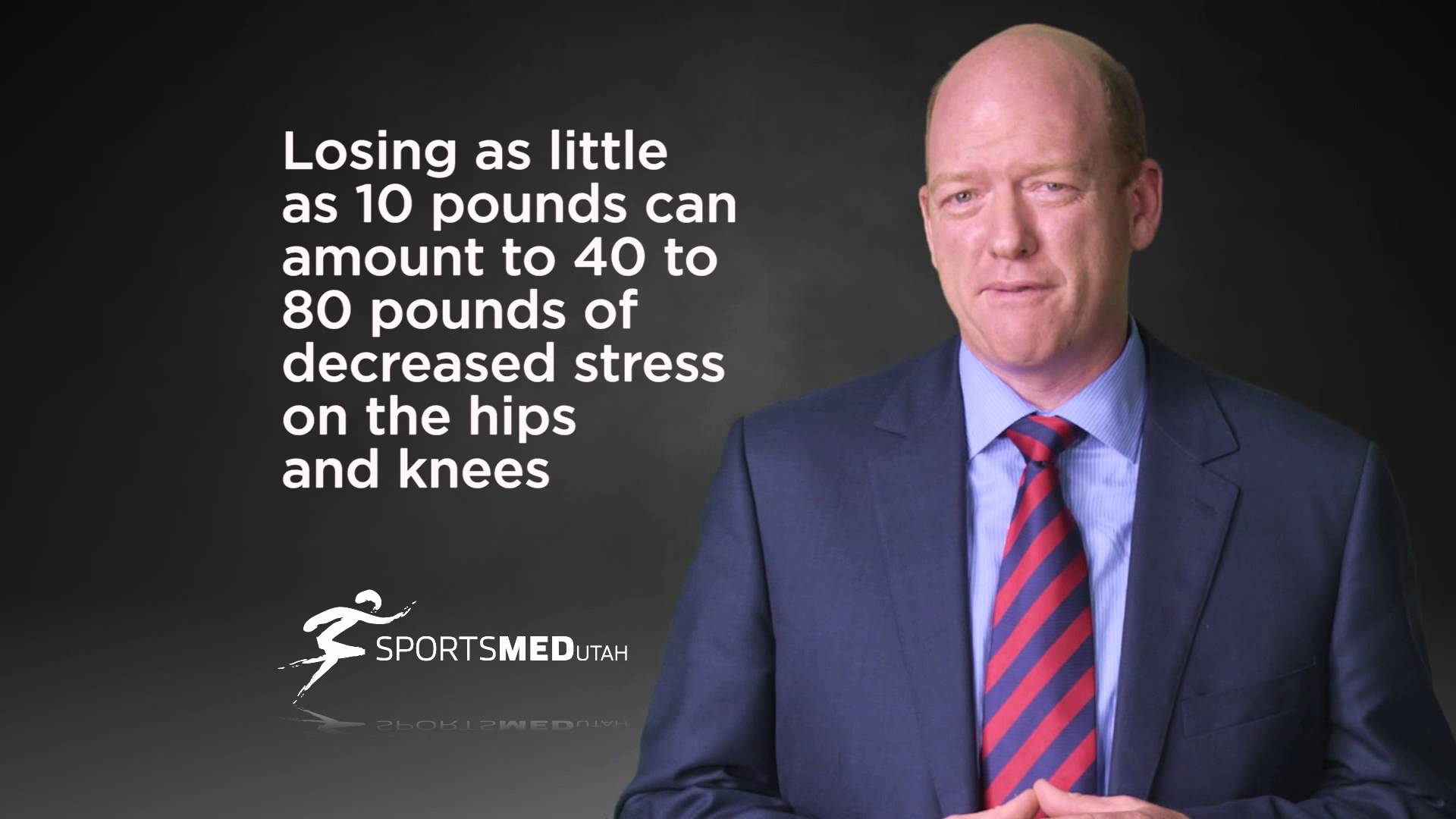|
BOOK NOW |
ASK ABOUT YOUR PAIN |
Home > Blog > Physiotherapy > Conditions We Treat > Knee Pain
Knee Pain Physiotherapy Singapore

Between 15 and 20% of all men are afflicted with knee pain. More women than men report knee pain, with the overall prevalence of knee pain in women roughly 20%
Pain and discomfort in the knees are very common conditions and complaints that we treat in our Singapore physiotherapy and hand therapy clinic.
There are a number of reasons why and what that causes knee pain, so let's cover them in this knee resource article.
Knee joint & anatomy

We should always start off with first having some understanding of our knees.
The knee joint have four bones
- femur / femoral bone (thigh bone)
- tibia (main bone in the calf)
- fibula (side bone in the calf)
- patella (the knee cap)
The knee have four (4) compartments
- medial tibiofemoral compartments
- lateral tibiofemoral compartments
- patellofemoral compartment
- superior tibiofibular joint
Each and any of these structures mentioned can get damaged or injured from trauma, disease or repetitive strains.
What are the common injuries that cause knee pain?
Some of the injuries that causes pain in our knees include the following:
- Knee sprain (ligament sprains)
- Medial collateral ligament injuries
- Lateral collateral ligament injuries
- Anterior cruciate ligament injuries
- Anterior cruciate ligament tears
- Posterior cruciate ligament injuries
- Meniscus / meniscal tear (medial or later or both)
- Quadriceps muscles strain
- Hamstring muscles strain
- Popliteal muscle strain
- Patellar tendon pull
- Hamstring tendon pull
- Popliteal tendon pullStrain (Muscle strain)
What are the common diseases that cause knee pain?
Some of the diseases that can cause knee pain includes:
- Knee osteoarthritis
- Chondromalacia patella
- Baker's cyst
- Meniscal cyst
- Discoid meniscus
- Osgood-Schlatter disease
- Larsen-Johansson disease
- Knee rheumatoid arthritis
- Osteochondritis dissecans disease
- Tumors
- Ankylosing spondylitis
- Reiter's syndrome
- Synovial chondromatosis disease
- Tuberculosis arthritis
- Septic arthritis (Pyogenic arthritis)
- Osteomyelitis
- Hemophilic arthritis
- Gout knee (Gouty arthritis)
common inflammations that cause knee pain
- Bursitis of the knee
- Prepatellar bursitis - Housemaid's knee (most common)
- Infrapatellar bursitis - Clergyman's knee (Superficial infrapatellar bursitis and Deep infrapatellar bursitis)
- Tendinitis
- Patellar tendinitis (Jumper's knee)
- Hamstring tendinitis
- Popliteal tendinitis
- Semimembranosus bursitis
- Synovitis of the knee
common deformities of the knee
- Genu varum
- Genu valgum
- Genu recurvatum (Knee hyperextension)
- Knee flexion deformity
- Bipartite patella
Syndromes of the knee
- Patellofemoral pain syndrome (Runner's knee)
- Plica syndrome
- Iliotibial band syndrome (ITB)
knee Fractures
- Femoral fracture
- Tibial fracture
- Patella fracture
knee Dislocations
- Patella dislocation
- Knee joint dislocation (Tibiofemoral joint dislocation)
Referred knee pain
Referred pain refers to a pain that is "felt" at a different location compared to where the pain/injury actually is eg thigh injury can be referred to the knee as pain.
Often a patient's knee pain can be caused and/or referred by injuries to the ankle, back, hips or others, which is why
- in-depth assessment of biomechanics, pain and injury history
- differential diagnosis by knee physiotherapists is important
Cold-induced Pain In Knees
There are studies that suggest that knee pains or pains in knees are more common in people who:
- live in places of colder temperatures and weather
- working in cold stores compared to those who work in non-cold stores
Pain in knees due to cold can be caused by the knee tendon undergoing tenosynovitis (inflammation of the tendon-synovial sheath) either caused or aggravated by the cold temperature exposure.
Cold temperature may also increase stiffness in knee joints (physics, biomechanics and temperature), and especially so in patients who are already compromised with knee disorders or diseases such as:
- fibromyalgia
- osteoarthritis
- knee injuries
- rheumatoid arthritis
knee Pain caused by sedentary lifestyle
(lack of mobility / exercise)

Individuals who tend to be more sedentary (spend much or most of their time seated) seems to be more prone to
- develop knee pain
- have recurring knee pain
The main underlying reason is when one isn't active in activities or lifestyle or work, this directly and immediately decreases the load demand on the muscles of the body (including the knee).
As a result, the muscles in the knee (as well as the body / other joints generally) gradually becomes weaker and lax-er, and the knee isnt able to support the knee joint, causing more compensatory patterns such as overstretches / overstrains, and even bone-to-bone impact, which cause and aggravate the common wear-and-tear osteoarthritis in the knee.
The blood vessels like arteries and veins can also be compressed, and this causes poor venous and arterial flows, which further causes more pains.
Other causes of knee pains
- Ligamentous laxity
- Fat pad impingement
- Knee effusion
- Deep vein thrombosis (DVT)
- Peripheral vascular disease
Physiotherapy for knee pains in Singapore
To begins the healing process of all knee pains, the most important is:
- to have a correct and accurate understanding, history and diagnosis of the knee pain
- personalize the knee physiotherapy treatment program to you
- knee physio over 6-12 weeks (patients often feel knee pain relief from week 1)
Knee pain physiotherapy may include:
- exercise therapy to increase muscle strength to support the knee
- joint mobilization
- soft tissue management
- ultrasound therapy to accelerate soft tissue healing
- ESWT shock wave therapy to the knee
- radio-frequency Indiba physiotherapy
- heat therapy to increase joint flexibility
- cold therapy to decrease inflammation and pain if any
Patients may benefit from regular core strengthening exercises including clinical Pilates as well as acupuncture therapy for pain management.